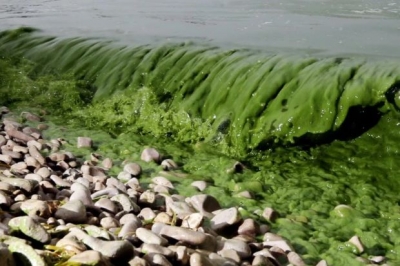
Recently, Lake Merrit in Oakland, California, the U.S… turned reddish brown, causing fear among the residents. They were advised to not use the water and to keep their pets away from the water body. Scientists suspected a possible case of Harmful Algal Bloom (HAB), and the samples have been sent for investigation. This is not the first time that HAB has been experienced in the lakes in the US. In the last few months, there has been a sporadic rise in the detection of algal bloom in the lakes. Lakes such as Hopatcong, Anna, Erie, and so on have been witnessing the highest concentration of HAB, triggering concerns.
Algal bloom is an overgrowth of algae or algae-like bacteria in fresh, salt, or brackish waters. They can occur in a variety of colours, namely red, blue-green, brown, and pink. Depending on the algae, they can lead to the formation of scum, foam, froth, or a slick. Not all algal blooms are toxic. A HAB, though, is, and can endanger humans and many organisms.
What causes HAB?
Most are caused by cyanobacteria. Though they are bacteria, they perform photosynthesis just like algae, and are often called blue-green algae. Some produce dangerous cyanotoxins. The most reported cyanobacteria is microcystis. HAB Occurs naturally as well as due to human activities. In fact, human activities such as the burning of fossil fuels, land development, and deforestation have all led to an increase in the amount of carbon dioxide. The cyanobacteria feed on the carbon dioxide, which fuels their growth.
Most harmful algal blooms are caused by cyanobacteria. Though they are bacteria, they perform photosynthesis just like algae, and are often called blue-green algae.
Picture Credit : Google




